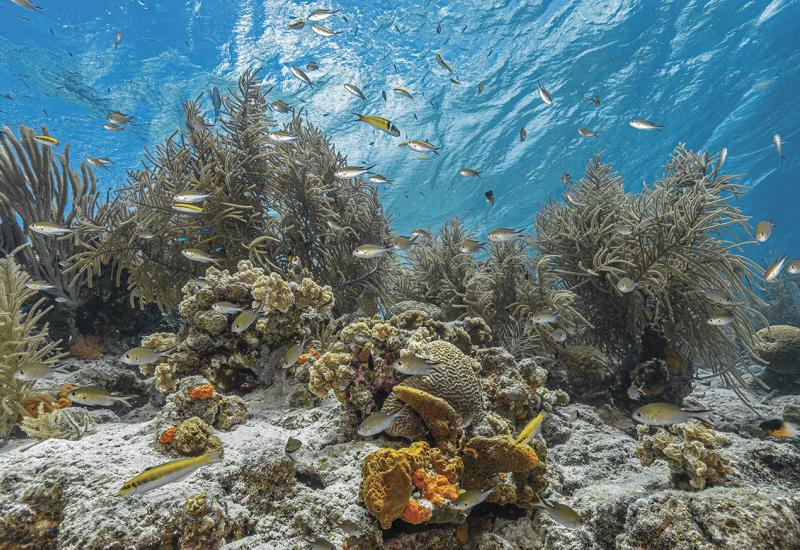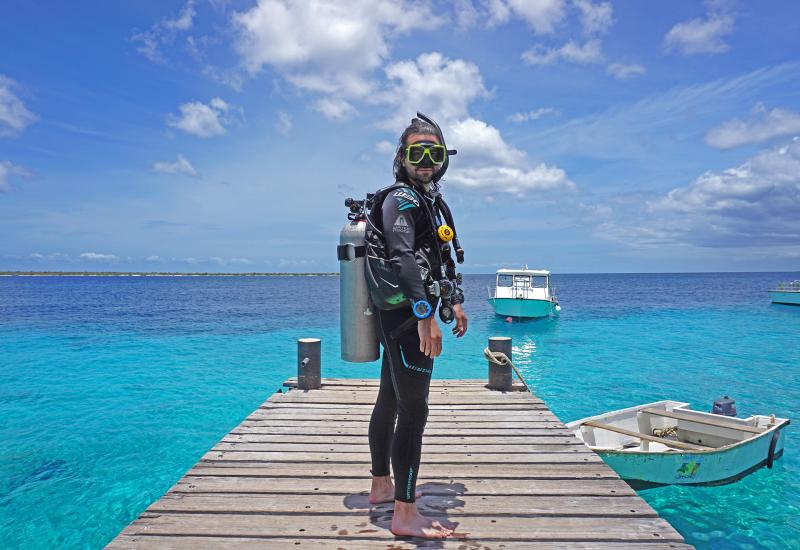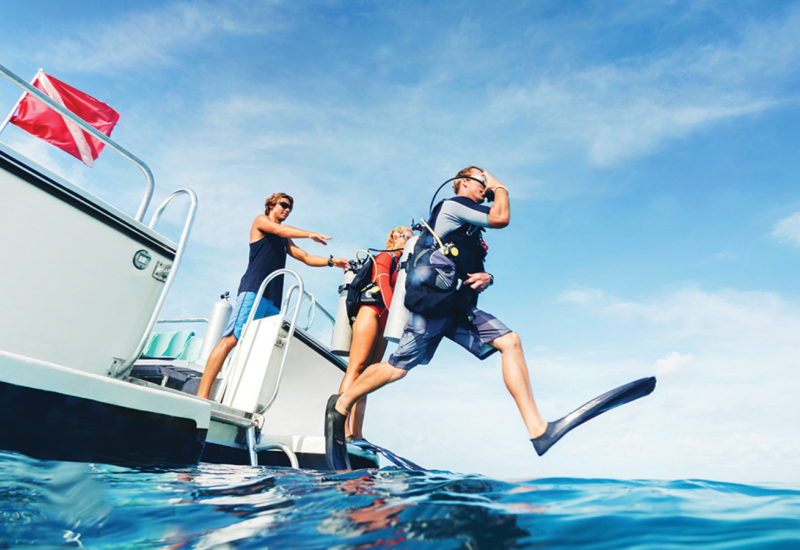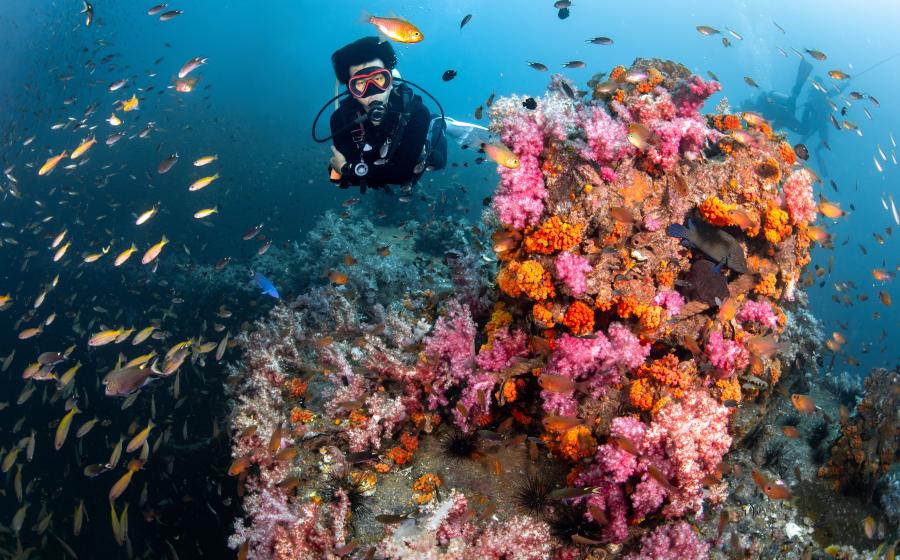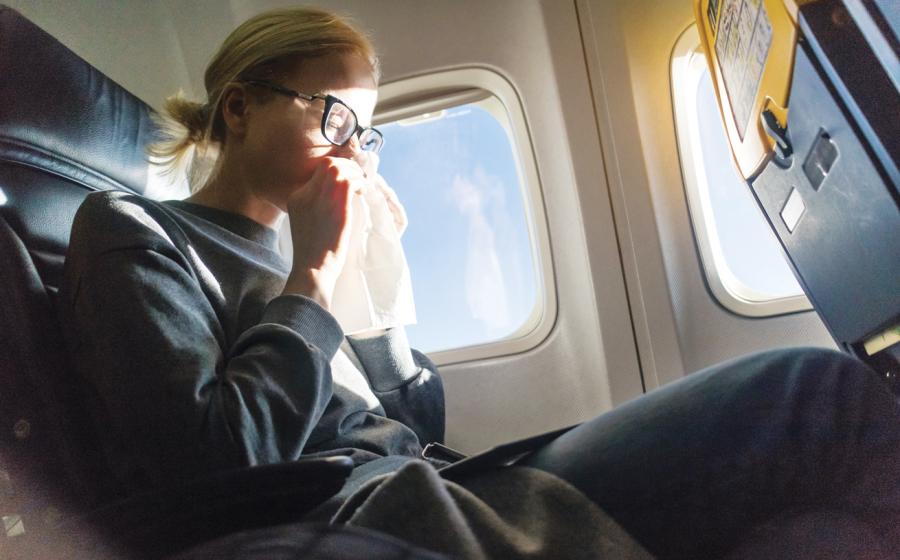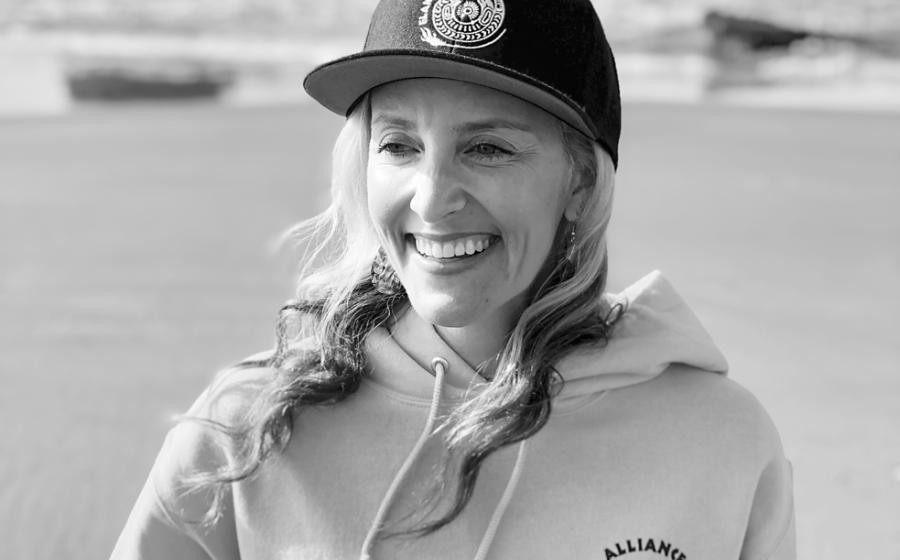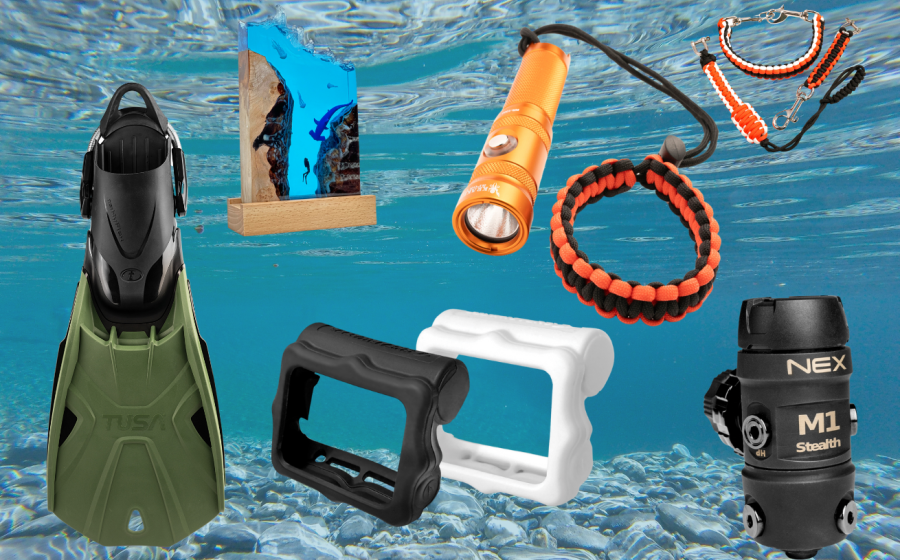Pro Tips for Being Neutrally Buoyant while Scuba Diving
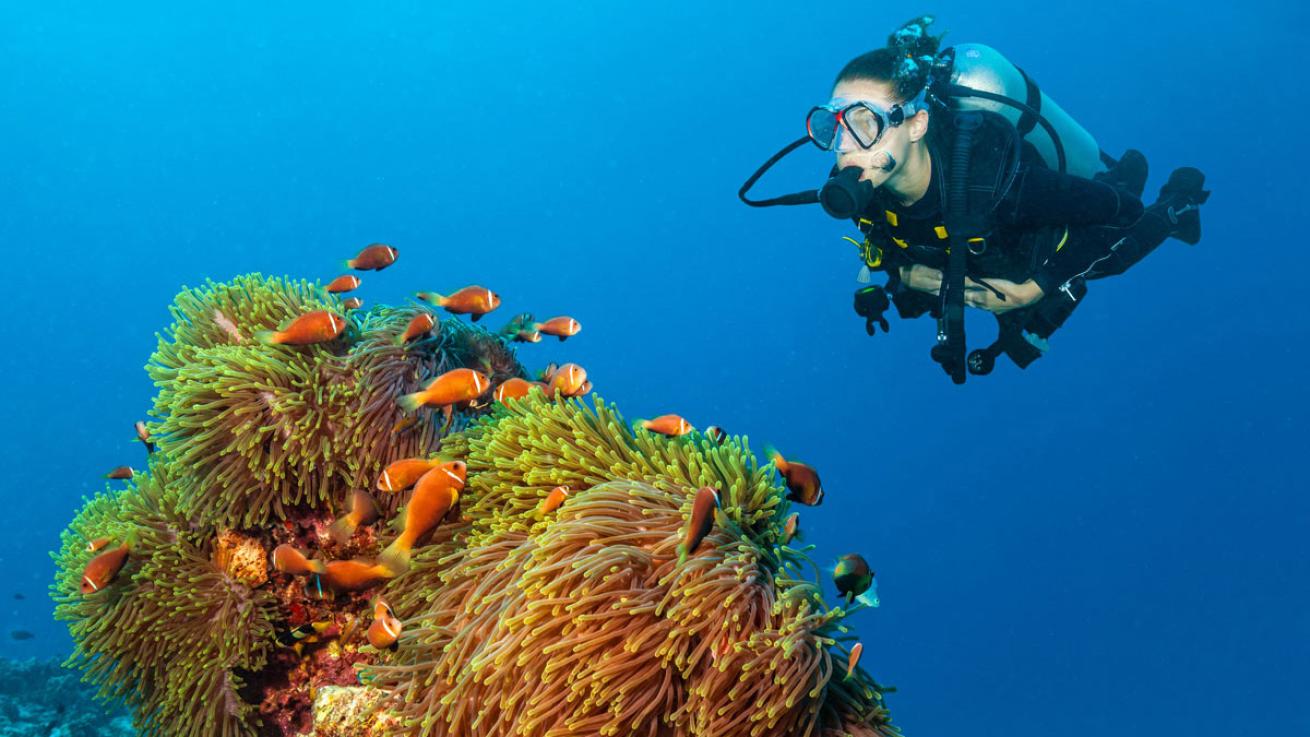
ShutterstockWhen a scuba diver is neutrally buoyant, he or she can hover above coral reefs and fish without fear of damaging delicate corals or other marine life.
How well I remember my first ocean dives, in the Bahamas, after earning my open water C-card. Or more accurately, how well I remember adding and subtracting air from my BC during the entire dive, with some pauses to marvel at how effortlessly some divers seemed to float through the water, whether we were at 15 feet, 30 feet, or 60 feet.
On a trip to Bonaire soon afterward, my dive buddy gave me a few pointers that made all the difference. I was lucky — my buddy recognized I was struggling to stay level, and also noticed how much weight I was wearing.
“Take off a pound or two,” he suggested.
“But won’t I have a harder time staying down?” I asked.
“Trust me,” he said.
I did — when I got a little floaty in the water, he dumped air from my BC.
As we swam over the reef, he demonstrated how he used his breathing to help him stay off the coral.
He also helped me streamline my gear and he worked with me to have streamlined swimming position.
With practice and experience, most divers do finally get the hang of neutral buoyancy. But if you’re struggling, follow these tips to achieve underwater neutral-buoyancy nirvana.
1) Take a class. In PADI’s Peak Performance Buoyancy Specialty Course, you’ll learn how to determine the exact weight you need; trim your weight system and scuba gear so you’re perfectly balanced in the water; streamline your body and your gear; and hover effortlessly in any position – vertically or horizontally.
2) Wear the correct amount of weight. “The main reason most divers struggle with buoyancy is that they don't take the time to weight properly,” says Karl Shreeves, PADI’s technical diving executive. “Often, it seems simpler to cut corners and just go a little heavy and let your BCD take care of it. But that means you swim feet-low and push extra drag through the water because you have to put more gas in your BCD. It also means bigger adjustments as you go up or down.”
But there are also issues with not wearing enough weight, says Shreeves. “If you end up underweighted, near the end of the dive you may end up fighting to stay down because you're too buoyant after using your air - that's about a 5-pound buoyancy increase with a typical cylinder - and you swim feet high. Either way, you use your air faster because you're using more energy.”
TIP: Do a weight check at the surface. Float upright with your regulator in and exhaling completely. You should sink until the water’s surface is at eye level. If not, add or remove weight and repeat until you get it right.
Our buoyancy calculator article can help you determine where to start in choosing how much weight you need.
3) Check your trim. “Distribute your weight for proper trim,” advises Shreeves. “If you're on a dive holiday, once you do this it's usually set for the rest of the trip provided you don't change the gear you're using.”
TIP: If you feel underweighted, don’t put all your weight on your belt or in your BC integrated-weight pockets. Try adding 1 or 2 pounds of lead to your BC’s rear pockets, to help distribute your weight more evenly.
4) Use a line to descend. It’s perfectly OK to pull yourself down a line (or kick down) when you begin your descent. Once you’re a few feet under — usually between 5 and 15 feet — you should be neutral or slightly negative. Using a line allows you to make a slow, controlled descent while you equalize your ears and mask.
TIP: If the boat isn’t tied off to a mooring pin, ask if the crew can put a short length of weighted line in the water.
5) Get streamlined. Flailing your arms and bicycle-kicking will affect your ability to stay at a level depth. Clasp your hands in front of you, and concentrate on kicking from your hips. Move slowly — you’ll see more, plus you’ll be able to control your depth better.
TIP: If you feel yourself constantly floating up, make sure all the air is vented from your BC.
6) Use your breath to make small adjustments. Feeling as if you’re sinking too close to the reef or wreck? Try not to use your BC’s inflator hose. Instead, make minor buoyancy changes with slow, deliberate breathing. Take a long, deep breath to rise slightly as you swim over a coral head or structure on a wreck (conversely, if you need to sink a bit, exhale slowly and completely).
TIP: If you find yourself feeling very heavy once you’re at depth, take off 1 pound of lead before your next dive. Subtract weight in small increments, until you feel neutral at depth.
7) Add and subtract air to your BC only when needed. If you feel negatively buoyant once you’ve reached the bottom or your desired depth, add one or two small, quick bursts of air to your BC. Give it a moment for you to feel the effect — never continuously press on your inflator button as you risk putting yourself into a runaway ascent situation.
TIP: Again, if you are consistently adding air to your BC at depth, it’s time to take off some lead. You may feel light at first, but once you get used to it, you’ll be far more comfortable.
“Being a little over- or underweighted is not usually major safety issue, but more of a performance and convenience issue,” says Shreeves. “But the potential is there — if you're overweighted, for example, you have more air in your BCD and/or drysuit, and have to exhaust more to control buoyancy as you ascend. If you don’t, the potential to descend and ascend too fast is higher, and once it starts, it’s harder to get back under control because you have to add or vent much more gas than when you’re properly weighted. Being underweighted can also make controlling your ascent harder, and safety stops difficult. The more your weight is off, the more potential for these problems, making significant over- or underweighting a more substantial safety concern.”
The bottom line is that controlling your buoyancy, weighting properly, and making sure you’re trimmed and streamlined, takes practice and experience. But once you dial it in, you’ll have more enjoyable, more efficient diving.


